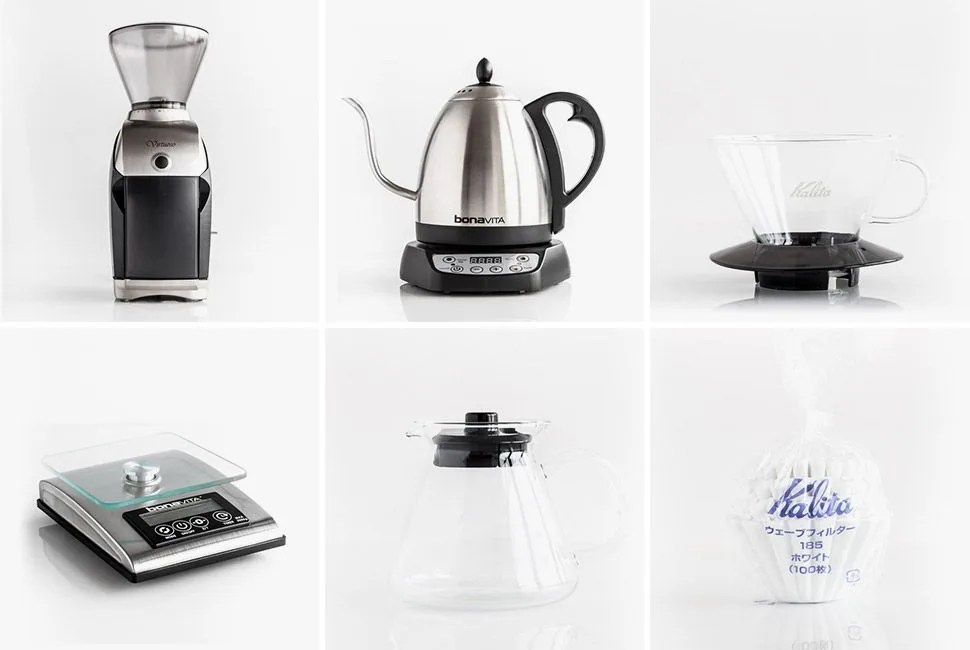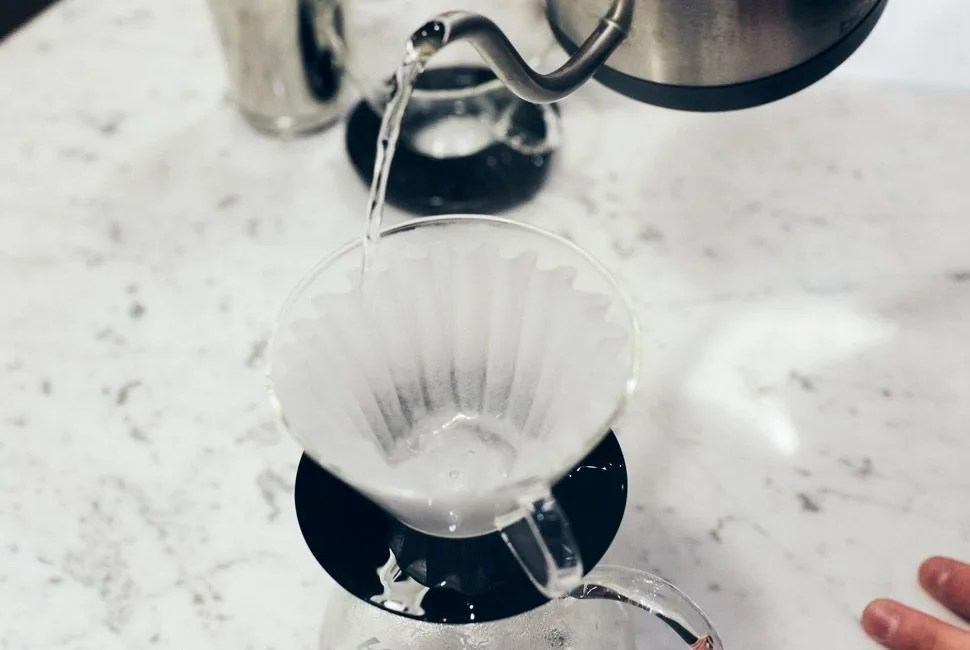After decades in the dark, used mostly amid the insular circles of Japanese coffee culture, pour-over coffee is having a moment, widely celebrated as the preferred brew method for drip coffee. Walk into any speciality coffee shop, from Seattle to Miami, and you’re bound to find a menu advertising pour-over brews; in fact, visitors to the MoMA in New York City will find a Chemex Coffee Maker in the museum’s permanent collection. Much of pour over’s appeal, says Oliver Tosky, lead educator at Parlor Coffee in Brooklyn, lies in the inherent simplicity of the technology.
“There’s no cost barrier to entry since pour-over systems are cheap to buy and maintain,” says Tosky. Drippers, the defining element of pour-over systems, range from $15 to $70, even from high-end brands like Hario and Chemex; a quality drip machine, like the Technivorm Moccamaster KBT 741 ($312), will run into the hundreds. “Home users of pour-over systems can focus their attention on buying higher-quality coffee,” says Tosky. “Shops, on the other hand, have adopted it so that they can offer several different coffees at the same time.” For baristas, this versatility with manual brew systems is heightened by the ability to control every element of the brew process, including how much water is introduced to coffee particles, and how fast.
All things considered, pour overs aren’t perfect. “All manual pour-over systems are exposed to air, and continuously lose heat throughout brew cycles,” says Tosky. The ideal alternative, such as a large industrial machine with an insulated boiler, is too expensive and impractical for daily home use — and also less versatile for coffee shops interested in serving different coffees. Conventional home brewers, on the other hand, such as Mr. Coffee machines, are made with very cheap heating elements, explains Tosky. “They just don’t reach the right temperature.”
 Courtesy
Courtesy“I think the choice of one material over another is often decided for aesthetic purposes — how it looks, how it feels — rather than performance.”
When it comes to one pour-over system over another, he and team at Parlor Coffee favor the Kalita Wave series, a longtime industry darling that’s only now catching up to the commercial popularity of the Chemex and Hario V60. “After many blind tastings, we found that the Kalita brews consistently clearer, cleaner cups of coffee than the Chemex and Hario V60,” says Tosky. “For lack of a better word, it’s slightly more forgiving.” The reasons for this buffer zone, he says, lie in the Kalita drippers’ three defining characteristics: a flat bottom (instead of a cone, as seen on both the Chemex and V60), three small openings (instead of one), and a ridged filter (instead of a flat one that hugs the entire perimeter of the dripper after being wet).
“With a V60 or Chemex, all the water filters through a single point at the bottom of a cone,” says Tosky. “With the flat bottom of the Kalita, all the water is going to pass through an even amount of coffee. Meanwhile, having three smaller holes, instead of one big one, provide some flow restriction.” In other words, it’s not reliant on a fastidious pour, or a finer grind — as with the Chemex and V60 — to prevent water from just rushing through the coffee without extracting flavor. “As for the filter,” adds Tosky, “there is less contact between the coffee and the actual brewer when you have ridges. This prevents the brewer from acting as a heatsink, and helps maintain the brew temperature.”











